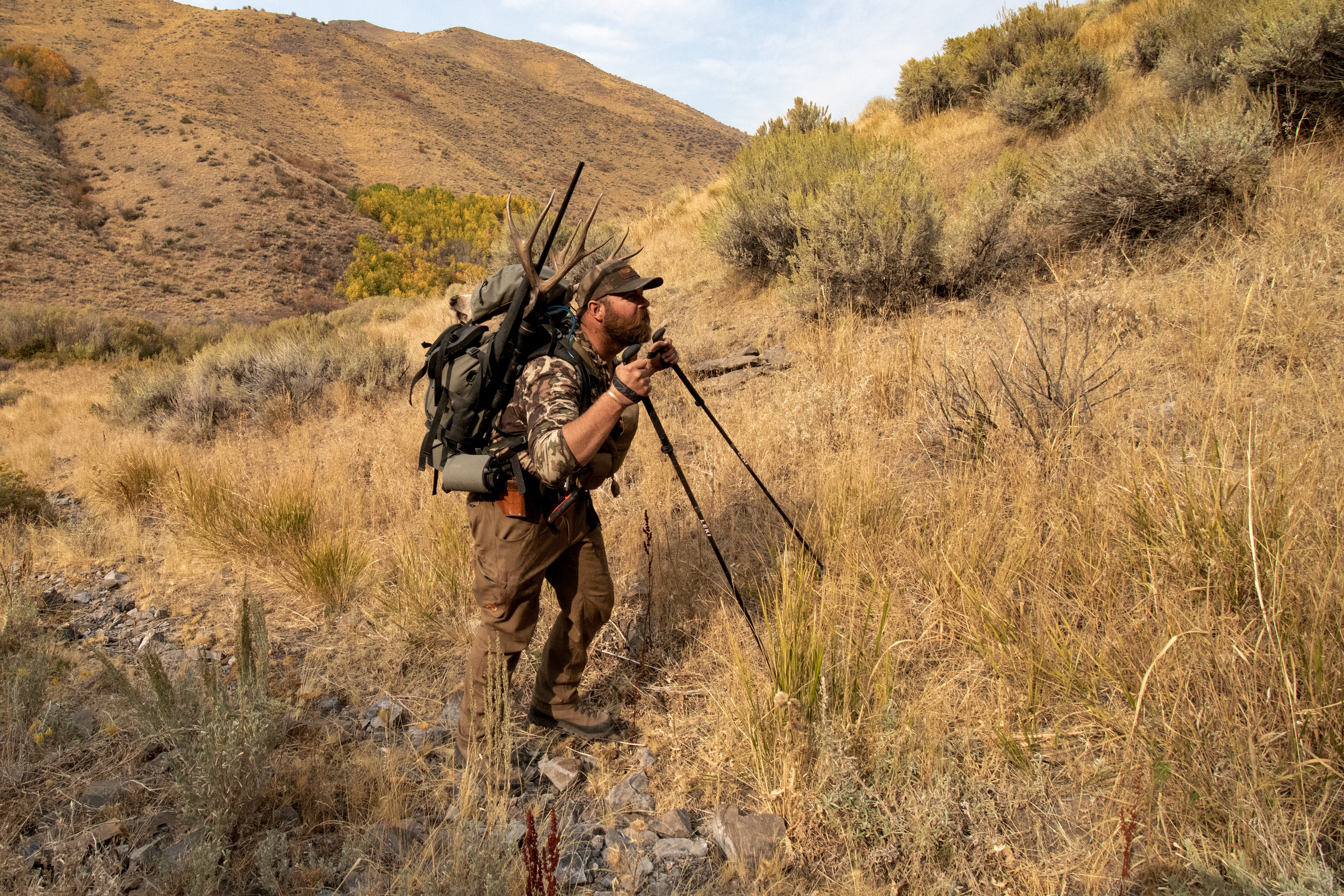on all orders over $1000
Hunting Packs : Internal frames vs external frames
by Joe Mannino
A good pack is one of the most important tools you can have with you on your hunt. There are a massive number of options for you to choose from when shopping for one of the best packs on the market. The main decision you are going to have to make is whether to buy an external or internal frame design. Also for the sake of clarity and lack of confusion we will be lumping internal and frameless packs together for this article.
What Are They?
First let’s define both of these options. An external frame pack is a pack that has a suspension or harness system that attaches directly to a rigid frame on the front and a bag that attaches directly to the frame on the back. Some examples of external frame packs would be, of course, the Outdoorsmans Palisade 90 and Long Range packs, most Kifaru duplex frame backpacks, and the Stone Glacier Krux Evo and Xcurve pack frames.
Internal frame or frameless packs are any pack that has a suspension system that connects directly to the pack. These packs usually do not have any sort of moving parts and the bag is usually not detachable from any portion of the suspension system. Some examples would be the Outdoorsmans Boulder 30, The Kifaru Checkpoint, and the Stone Glacier Serac 1700.
External Frames
Now the benefits and drawbacks of each of these types of packs. First, the external frame pack. The largest benefit of having an external frame pack is the ability to carry heavier loadouts more comfortably. Also they tend to be larger than internal frame packs, allowing for more storage space and capacity. The fact that the suspension of the external frame pack is attached to something fairly rigid and in most cases very strong allows the user to carry heavier loads in a more secure manner. Also, if you plan on training with a heavy pack, we advise an external frame system like the Atlas Trainer.
There are downsides of course. Weight being the main issue. The more rigid and durable you make a hunting pack frame the heavier it gets. Some have tried to make frames out of extremely lightweight materials and they work well but they aren’t the same as a frame made to be as indestructible as possible. You will have to trade a small gain in weight of your empty pack to be able to haul out a hindquarter of a moose without your pack just giving up halfway through.
The heavier a pack becomes the more important rigidity becomes. I like to think of it in terms of cars. In this scenario the speed of the car is the weight of the pack and the stiffness of the car's suspension is… well, the stiffness of the pack's suspension. It's a lot easier and safer to take a sharp corner at 60mph in a Ferrari that is 2 inches off the ground that is sitting on a suspension that has about an inch of play than it is to do the same thing in a Jeep that has 72 inches of suspension travel. Thanks for hanging in there with me for that long winded comparison that may or may not have helped get my point across.
Internal Frames
Now the internal frame pack or frameless pack design is built for comfort, convenience and weight savings. These types of packs are usually designed with convenience in mind. That means more pockets, more types of storage and features. In my opinion the most notable pro to frameless packs is their flexibility. In the hunting industry they are usually designed with both the field and the office in mind. You can be glassing on a hilltop with a tripod and spotting scope that morning and be at work with time to spare and your laptop in tow using the same exact pack.
The obvious downside is carrying capacity both in terms of weight and size. Even the largest frameless packs are not going to be able to carry the same weight as an external frame pack. The suspension is connected directly to the bag so any weight that is placed in the pack is going to rest directly on your shoulders. All of that weight resting on your shoulders is not sustainable or comfortable. If your 3-year-old asks to get on your shoulders it's no big deal but if your buddy Dave asked you would probably say he was a little too heavy, also that’s weird and you should probably stop hanging out with Dave.
Conclusion
In closing, when searching for the right hunting pack and trying to decide between an external or internal frame pack there is really only one question you have to ask yourself. Do I plan on carrying a dead animal inside of this pack? If the answer is yes or even maybe, we strongly encourage the use of a strong external frame pack. If the answer is no then take into consideration what kind of weight you are going to be packing. If the pack is going to stay under 30-40lbs then an internal or frameless pack will do just fine.
One last bit of advice. Test your pack before you take it into the field. Load it up with weight and walk around the block. Make sure the pack is fitted properly and adjustments are made before use. No matter the suspension system, packs take a little bit of adjustment and fine tuning to fit just right.
If you are looking to learn more about packs or anything else related to hunting and the outdoors make sure to visit the rest of our blog posts.
